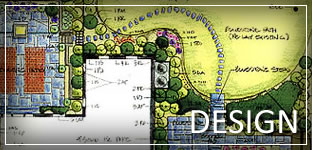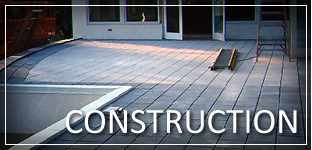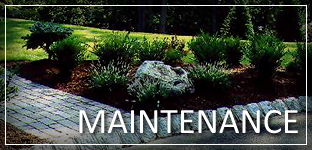PROFESSIONAL LANDSCAPING TIPS & ADVICE
As a service to our customers, Scalora Landscaping is providing useful tips for homeowners regarding landscaping. Check back here often as we will be including more tips in the next few months.
Sun Patterns.
In this Hemisphere, the sun rises and sets slightly North of the East West line. This means, in effect that the North side of any East- West structure is in shade at midday and receives weak sunlight in the early morning and late afternoon. Plants requiring direct sunlight will not do well with a Northern exposure.
Weather and Plants.
Consider the wind, sun and rain. Sun patterns, wind directions and rainfall all have their effects on plants. Examples: Cold winter winds, water accumulation and erosion, sun heated areas, runoff and poor drainage. These problems can be classified as microclimates in all parts of the landscape.
Noise Control.
Noise and sound can be buffered somewhat by plants depending on the placement and the thickness of the branches. Mounds of plants attenuate sound much better than rows. By mounding coarse needled conifer the noise can reflect upward and away from the area you are trying to buffer. While mounding or creating a berm, you can also add other plants for color and interest.
Watering Turf.
Frequent irrigation is detrimental to turf. It causes reduced wear tolerance, low vigor, high disease incidence, and increased injury from climatic stresses.
Watering should be executed during early morning hrs. to allow the sun and wind to dry excess moisture quickly.
Watering times differ with each household- Considerations are sun exposure, slope of turf areas, elevation of property and soil quality.
General rule is a lawn requires 1 inch of water per week. Worst case scenario, a full sun site with slope would require 90 minutes of watering per zone. Alternate zones daily to complete the cycle within 5 days then repeat.
Examples: 10 Zone system (Dry Weather Conditions)
• Lawn Zones 1 and 2 on Monday 90 min per zone
• Lawn Zones 3 and 4 on Tuesday 90 min per zone
• Lawn Zones 5 and 6 on Wednesday 90 min per zone
• Lawn Zones 7 and 8 on Thursday 90 min per zone
• Lawn Zones 9 and 10 on Friday 90 min per zone
• Repeat cycle starting Monday
Turf Care Hints:
• Keep mowing heights at 3" to 4" on Kentucky Bluegrass Lawns
• Keep mowing heights 21/2" to 3" on all other grasses
• Mow on 7 day intervals, be consistent as weather permitting.
Trees Save Money.
Asphalt, which is a dark colored surface absorbs the most Solar radiation and increases the air temperature around it. Concrete, the lightest color reflects more of the sunlight rather than absorbing it. In terms of plants, a large shade tree canopy reflects the incoming solar radiation back into the sky therefore reducing the temperature directly underneath the tree. This is why shade trees are so important in the landscape. As they stand tall and wide they protect the earth by providing shade and increasing human comfort. After a hot sunny day plants quickly release the heat energy stored during the day. Thus landscaped areas are much cooler at night than paved urban areas.
Examples: If your home is underneath a canopy of trees. It will be cooler in both the daytime and the nighttime, reducing the need for air conditioning and subsequently saving you energy costs. During winter months trees will loose their leaves allowing the sunlight to penetrate and warm the house.
The Benefits of Planting Trees
- Branches and Trunk reduce noise pollution
- Their roots hold the soil
- They provide cooling shade
- The decayed leaves replenish the soil with nutrients
- Freshen the air with oxygen as they take carbon dioxide to grow.
Listed below are the most popular shade trees in our area. Zone 7-8
|
30 to 50 ft. |
to 25 ft. |
Poplar |
European Mountain Ash |
Crabapple |
White Oak |
Paper Birch |
Amur Maple |
Smooth Leaved Elm |
Red Horse Chestnut |
Russian Olive |
Pin Oak |
Little Leaf Linden |
Higan Cherry |
Ginko |
Eurpoean White Birch |
Japanese Maple |
Sweet Gum |
Amur Cork Tree |
Serviceberry |
Eurpoean Beech |
Red Maple |
Chinese Chestnut |
London Plan Tree |
Flowering Ash |
Flowering Peach |
Shingle Oak |
Chinese Elm |
Trinity Pear |
Cork Oak |
Japanese Pagoda Tree |
Japanese Apricot |
Southern Magnolia |
Common Honey Locust |
Flowering Cherry |
|
Katsura Tree |
Chinese Elm |
|
American Yellow Wood |
Silk Tree |
|
Japanese Zelkova |
Japanese Snowbell |
|
White Mulberry |
Flowering Dogwood |
|
*Pictures available by contacting Scalora Design Department. |


